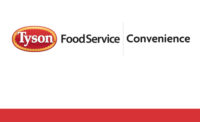Consumer Snacking
Consumers are snacking more often and considering more items as snacks. This presents new opportunities for operators and food manufacturers.

Hot Pockets Panadas Chorizo & Egg
Nestlé Professional
Source: Nestlé Professional


Studies suggest more patrons are viewing, choosing appetizers for meal alternatives.
Source: Brinker International/Chili’s Grill & Bar

Lamb Weston’s Tantalizers Queso dipNSide


Mini Me. Consumers like bite-size, dippable appetizer options in various formats, flavors.
Source: Brinker International / Chili’s Grill & Bar






Anyone keeping an eye on foodservice over the past couple of years has certainly charted the ongoing progression of snack options on the menu. From the proliferation of small plates to mini foods to dollar-menu handhelds, it seems operators are continuously introducing foods that cater to their customers’ around-the-clock snacking behavior.
In early 2014, Technomic released “The Snacking Consumer Trend Report” to reveal the latest menu-development and consumer trends related to foodservice snacks. Data was gathered from an online consumer survey with a nationally representative sample of more than 1,500 U.S. consumers. The survey examined consumer consumption, purchasing behavior and preferences for snacks.
The key findings of this extensive study show that snacking occasions represent a growth channel for foodservice operators. The retail market is aggressively promoting snacks, but there’s still plenty of room for restaurants to expand their snack programs and grab share. By providing more innovative, healthy and easily portable snacks, and by boosting the variety of snacks on the menu, restaurants are in a position to increase incremental traffic and sales—particularly among a younger customer base.
Here’s a closer look at how consumers weighed in on snacks—and how their evolving needs are making an impact on the industry while exposing new areas of growth opportunity.
Snacking’s Up
Snack consumption is on the rise. Half of today’s consumers (51%) say they’re snacking at least twice a day, which is an increase from the 48% who said the same in 2012. And, about a third of consumers (31%) say they’re snacking more frequently than they were just two years ago.
Today’s snacking occasions may occupy the traditional between-meal niche, but they’re also fitting into more of a flexible sensibility on the part of foodservice consumers, who are choosing more and more snack options that are suitable to be eaten as meals. In fact, half of consumers (49%) eat snacks between meals and 45% replace one or two daily meals with a snack.
What’s the Motivation?
Some 54% of consumers report that hunger motivates them to snack, which is a slightly lower proportion of consumers than in 2012. This response points to the necessity of snacking as a part of everyday life, to meet the basic need of hunger. Further, 25% of respondents say they snack when they are hungry and don’t have time to eat a full meal, demonstrating the draw of convenience as an attribute for snacking occasions.
Consumer data suggests snacking provides many people with feelings of pleasure or enjoyment, and even entertains them when they are bored. A third of consumers (32%) cite boredom as a motivator for snacking, and 28% of consumers say that they’re not really hungry when they snack—they simply enjoy snacking.
Habits also play an important role: 37% of consumers say they like to snack while doing certain activities, and 27% say they’re just “used to snacking.” One takeaway showing contrasts between age groups: the convenience of a quick snack is more of a motivating factor to young consumers than their older counterparts.
The Retail Threat
These days, a wider assortment of foods and beverages are now considered to be snacks, and convenience stores and other retailers are sparking competition with restaurants in order to meet the growing demand. In fact, more consumers purchase snacks from the prepared foods section of the grocery store than from any other foodservice location measured. About half of consumers (49%) also purchase snacks from c-store foodservice formats.
Younger consumers are leading the push toward convenience-store snack programs. Overall, more consumers aged 18-34 than consumers aged 35 and older purchase snacks from retail locations at least occasionally.
Price and the Consumer Purchasing Decision
It’s clear that consumers have different price thresholds for snacks at different types of restaurants. For fast-food burger restaurants, for example, the average price threshold is $3.40. For “other” fast-food restaurants, however, the average price threshold for snacks is $4.40, suggesting that consumers have particularly strong low-price expectations for burger chains. Respondents’ mean price threshold for snacks at coffee cafés, which usually consist of a beverage or a baked good, is $4.20.
For fast-casual restaurants, the mean price threshold for snacks is $6.10, but bakery cafés are lower, at an average price threshold of $4.70 for a snack. At full-service restaurants, where snacks are often appetizers that are served in a platter presentation “for the table,” the mean price threshold is $7.90.
Looking at price data from a wider spectrum of venues, consumers also host a variety of price thresholds for snacks at different types of retailer foodservice locations. Of all retail or other non-restaurant foodservice concepts measured, food trucks boast the highest average price of $5.60 for a snack. Food trucks also most closely resemble an operator in this regard, as they are a mobile extension of a restaurant concept.
Consumers are willing to spend more money on snacks from college or university cafeterias than they are at work cafeterias, possibly because an interest in late-night snacking is driving up price thresholds at college cafeterias. Also, consumers report a higher mean price threshold for snacks at grocery store’s prepared foods’ sections than they do at convenience store’s prepared foods’ sections, perhaps because grocery stores are widely considered to offer a greater variety of fresher, higher-quality prepared snacks than c-stores.
The lowest mean price consumers are willing to pay for a snack, $2.10, is at a vending machine. This is most likely because vending machines are packed with small, low-cost retail food products, such as potato chips or candy. Consumers may be willing to spend $2.10 for a bag of chips and a can of soda together for their snack.
Prep, Portions and Portability
|
What’s the Outlook?
Future growth of snacking occasions will depend upon operators’ ability to meet and exceed consumer expectations for variety, portability, range of portion sizes and convenience. Trendspotting for snacks points to several key developments to watch:
|
Consumers are integrating foodservice into faster paced lifestyles. For younger consumers and women in particular, the availability of convenient, portable snack options is becoming increasingly important. Notably more women (63%) than men (57%) place value on a snack’s portability. Further, three-fifths of consumers (60%) in 2014, compared to only 55% in 2012, cite portability as an important factor when choosing a snack.
Along this same vein, two thirds of consumers (66%) rank ease of preparation as important for snacks, while nearly as many consumers say the same for speed of preparation. Clearly, the takeaway for this finding is that consumers are on the lookout for fast, easy-to-source snacks that are suitable for on-the-go consumption.
Additionally, women place particular importance on portion size of a snack and do not want oversized portions, possibly due to caloric concerns or the desire to preserve their appetite for the next meal. Three-fifths of women (59%) compared to only 46% of men say that it is important for the portion size of a snack not to be too large.
Snack Consumers Want More from Restaurants
The hike in snack consumption means restaurant customers are searching for a wider range of options on the menu. But, what do today’s consumers think of the current menu mix for snacks? The latest research shows that they widely perceive restaurants have considerable room to improve on providing both food and beverage snacks.
Roughly one in five consumers report limited-service restaurants do a good job of providing the types of items they would order as a snack; 24% say the same for full-service restaurants. It’s apparent that significant consumer demand exists for a wider variety of restaurant snacks
It’s interesting that consumers think FSRs do a better job than LSRs in providing options they would eat as a snack. This may mean that full-service restaurants are effectively promoting appetizers and small plates as snacks, but that LSRs may not be communicating as strong a message with their sides and smaller items.
Younger consumers are the most satisfied with restaurant snack offerings at both LSRs and FSRs. Almost one in three of consumers aged 25-34 say that LSRs (27%) and FSRs (30%) do a good job of providing foods they would eat as snacks. In contrast, respondents aged 45 years and older report that they are least pleased with snack options available at both types of restaurants.
Looking for a reprint of this article?
From high-res PDFs to custom plaques, order your copy today!










